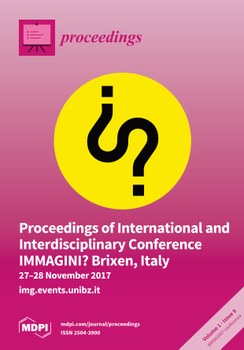Rassegna articoli scientifici

Art Pedagogy and Gender Education:
The Dialectic between Images and Consciousness, Words and Meanings
Manuela Gallerani
Department of Education, Alma Mater Studiorum-University of Bologna, 40126 Bologna, Italy; manuela.gallerani@unibo.it
Presented at the International and Interdisciplinary Conference IMMAGINI? Image and Imagination
between Representation, Communication, Education and Psychology, Brixen, Italy, 27–28 November 2017. Published: 24 November 2017
Abstract: The close relationship between gender stereotypes, representations of masculine and feminine roles and the images of women and men produced by art, mass media and the collective consciousness is as self-evident as it is—all too frequently—underestimated and misunderstood. This evidence is closely related to the persistence of damaging stereotypes of gender roles still common accepted in the Italian culture (as well as in other UE Member States), nevertheless gender stereotypes reduce the life opportunities for women and girls, for men and boys. In fact, inequality between women and men, and the prevailing gender roles are deeply rooted in obsolete social structures and anachronistic mental attitudes. Thus, equal opportunities education beginning in early childhood plays a crucial role, both in creating a new language to underpin the relationship between the genders and in enhancing children’s critical understanding of the plurality and complexity of the life contexts, narratives, representations of gender and social roles and, also, symbolic universes surrounding them.
Keywords: art pedagogy; early childhood; equal opportunities education; gender education; picture books

Scappini, Ettore; Trentini, Marco, Education and employment in Italy of the cohort of adults born in 1954-58: an analysis from 1993 to 2009, «Quality & Quantity», 2016, 50, pp. 1611 – 1631
Abstract
The article concerns the return of education in Italy, assessed through labour market participation and occupation of people born in the cohort 1954–1958. The changes in time are analysed in the years 1993–2009, that is since the transition from school to work has been definitely ended (35–40 age group) until before retirement (50–55 age group). We will show that the relationship between education and employment is rather complex, varies over time and space, and features significant gender-based differences. In terms of employability and occupation, the advantage of a high level of education is relatively greater for those who occupy a more disadvantaged position in the labour market (women and those who live in the least dynamic areas of Italy).
Keywords
Education Employment Gender Labour market Occupation Return of education
In evidenza
-
-
Keywords: art pedagogy; early childhood; equal opportunities education; gender education; picture books